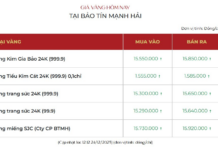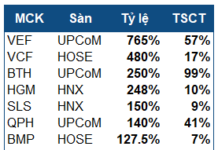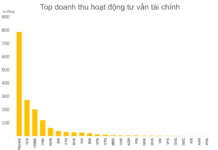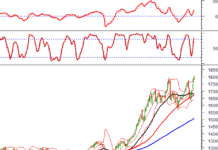Fluctuating Deposit Interest Rates
Deposit interest rates of some commercial banks tend to increase for short-term maturities to encourage depositors to renew their savings accounts as credit demand picks up again.
For instance, Techcombank has raised savings interest rates for 1 and 2-month terms for regular counter deposits, bringing the interest rate for these terms to 3.15% per annum. Meanwhile, the bank maintained the interest rate for other terms, with 3 and 5-month terms at 3.35% per annum, 6-11 month terms at 4.3% per annum, and all terms of 12 months or more at 5% per annum.
Previously, VPBank changed the rates on its deposit interest rate table, offering 1-month counter deposits with rates ranging from 3.5% to 3.7% per annum, depending on the end-of-term or monthly interest payment program. The bank’s 2-5 month terms are listed at an interest rate of 3.75-3.9% per annum, 6-11 month terms at 4.9%-5.1% per annum, 12-18 month terms at 5.4%-5.5% per annum, and 36-month terms at 5.7%-5.8% per annum.
To encourage online savings, most banks offer slightly higher rates, approximately 0.1% more than the counter deposit rates. However, the bonus interest rate has decreased slightly compared to before.
On the other hand, some banks have lowered interest rates for longer-term maturities of 24 and 36 months. According to these banks, most customers prefer shorter-term deposits for easier liquidity when needed or to take advantage of potentially higher interest rates in the future.
For example, ABBank reduced its 12-month deposit interest rate from 6.2% to 6% per annum. OCB also decreased interest rates by 0.2% for 24-36 month terms, bringing them down to 5.8% per annum. Bac A Bank lowered its deposit rates by 0.1-0.2% across most maturities, notably offering 18-36 month terms for deposits of 1 billion VND and above at 5.95% per annum, down from 6.05% previously. SeABank made a deeper cut, offering 5.95% for 15-36 month terms, compared to the previous rate of 6.2% per annum. However, to qualify for this rate, customers must deposit a minimum of 10 billion VND.
In the current banking market, there are also deposit rates as high as 8-9% per annum, but these are only available to customers who can deposit hundreds of billions of VND.
While deposit interest rates at joint-stock commercial banks fluctuate, the rates of the Big 4 state-owned banks remain unchanged and are maintained at very low levels. Currently, the highest deposit interest rates offered by small-scale joint-stock commercial banks average 6-6.2% per annum. In contrast, the Big 4 state-owned banks offer deposit interest rates of only 4.6%-4.7% per annum for terms of 12 months or more, 1.6%-1.8% per annum for 1-month terms, and 3.2-3.3% per annum for 6-9 month terms.

Banks that actively lower interest rates will have the opportunity to be allocated higher credit growth targets for the following year.
Lending Rates to Remain Low
According to experts, it is understandable that banks are raising deposit interest rates given the persistent inflationary pressures. Additionally, banks face competition from other investment channels that offer more attractive returns, such as corporate bond yields, stock market gains, and real estate investments. Moreover, as credit demand is picking up along with the economic recovery, banks need to attract more deposits to support lending activities.
In its recently published report on the economic outlook for the second half of 2024, KB Vietnam Securities Company predicted that the expected recovery in credit demand will drive up capital mobilization needs, leading to a further increase in deposit interest rates towards the end of the year.
A representative of the State Bank of Vietnam (SBV) also noted that while banks have been publishing loan interest rate information on their websites, there has been a slight increase in new deposit interest rates since the middle of 2024 compared to the end of April. The report also highlighted that the upward trend in deposit interest rates set by many banks will put pressure on lending rates in the future.
In response, the SBV issued Document 4462/NHNN-CSTT on credit and interest rate solutions, requesting banks to consider the difference between deposit and lending interest rates and to continue reducing costs to support the economy. As the economy typically experiences strong growth in the fourth quarter of each year, resulting in surging credit demand, banks need to ensure sustainable business operations throughout the year.
However, experts believe that despite the increase in deposit interest rates, lending rates are likely to remain low as credit demand remains subdued. Meanwhile, the SBV continues to instruct credit institutions to implement cost-saving measures, simplify loan procedures, and promote the application of information technology and digital transformation to reduce lending rates.
To support banks in stabilizing deposit interest rates and reducing lending rates, the SBV has further lowered the winning bid interest rate for its treasury bills to 4.15%. In parallel, the SBV continues to flexibly manage the open market operations to ensure liquidity for banks.
Notably, experts point out that the US dollar is currently experiencing a significant decline in the global market due to expectations that the US Federal Reserve (Fed) will begin cutting interest rates at its September policy meeting. This development will also ease pressure on domestic exchange rates and interest rates.







































